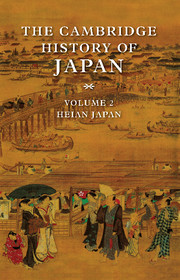Crossref Citations
This Book has been
cited by the following publications. This list is generated based on data provided by Crossref.
Bowring, Richard
2003.
Murasaki Shikibu: The Tale of Genji.
Cohen, Walter
2007.
Eurasian Fiction.
The Global South,
Vol. 1,
Issue. 2,
p.
100.
Lieberman, Victor
2008.
Protected Rimlands and Exposed Zones: Reconfiguring Premodern Eurasia.
Comparative Studies in Society and History,
Vol. 50,
Issue. 3,
p.
692.
Blair, Heather
2013.
Religion and Politics in Heian‐Period Japan.
Religion Compass,
Vol. 7,
Issue. 8,
p.
284.
2015.
A Cultural History of Japanese Buddhism.
p.
45.
Geary, Patrick J.
Ali, Daud
Atkins, Paul S.
Cooperson, Michael
Gomes, Rita Costa
Dutton, Paul
Melville, Gert
Rapp, Claudia
Spieß, Karl-Heinz
West, Stephen
and
Yu, Pauline
2015.
The Cambridge World History.
p.
179.
Hayami, Akira
2015.
Japan’s Industrious Revolution.
p.
1.
Keyworth, George A.
2016.
Apocryphal Chinese books in the Buddhist canon at Matsuo Shintō shrine.
Studies in Chinese Religions,
Vol. 2,
Issue. 3,
p.
281.
Keyworth, George A.
2021.
Following medieval Chinese Buddhist precedents with ritual practices using exoteric Buddhist scriptures (kengyō顕経) from Amanosan Kongōji 天野山金剛寺 and Shinpukuji 真福寺in medieval Japan.
Studies in Chinese Religions,
Vol. 7,
Issue. 2-3,
p.
173.





